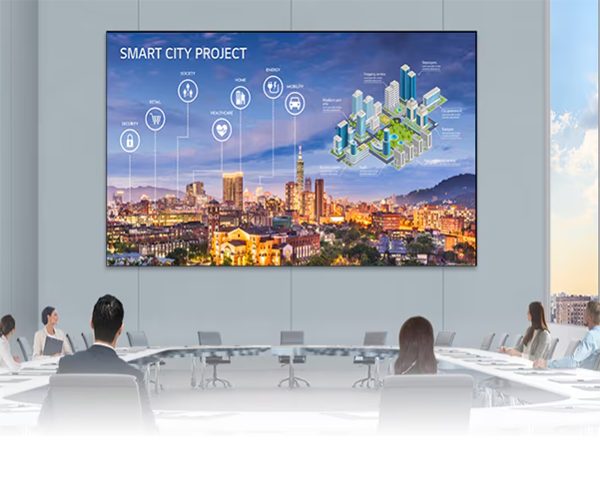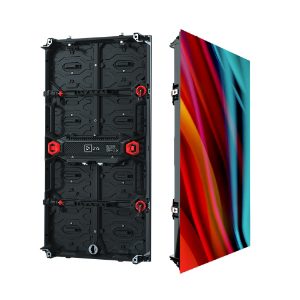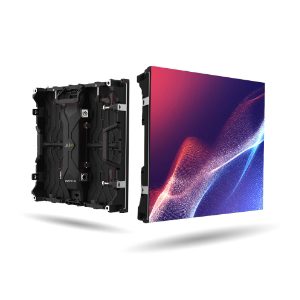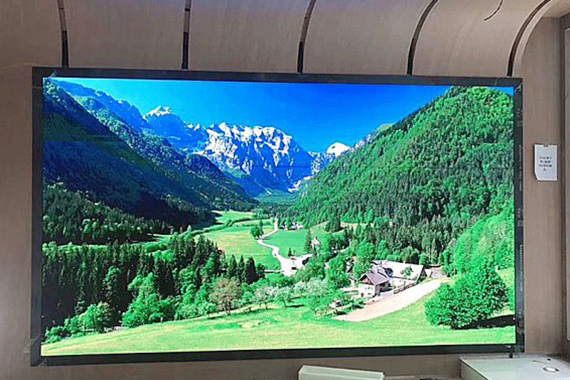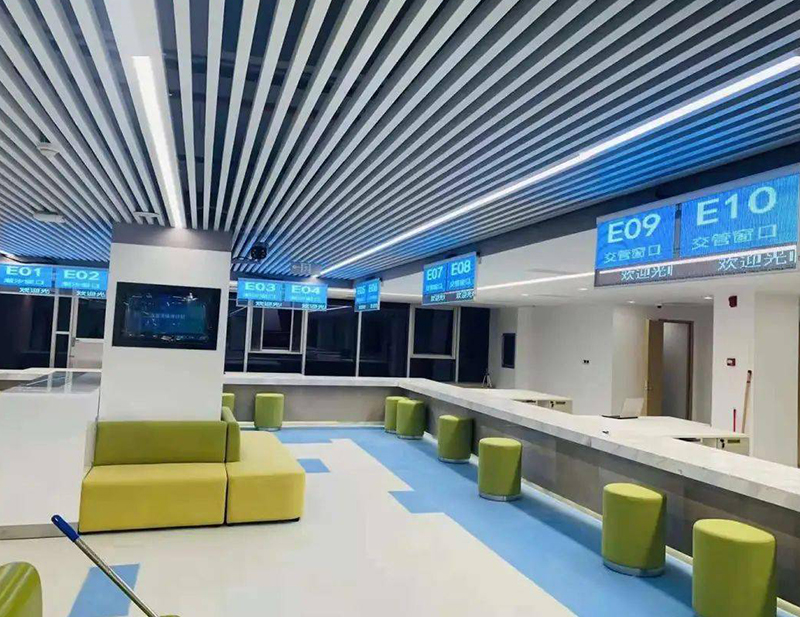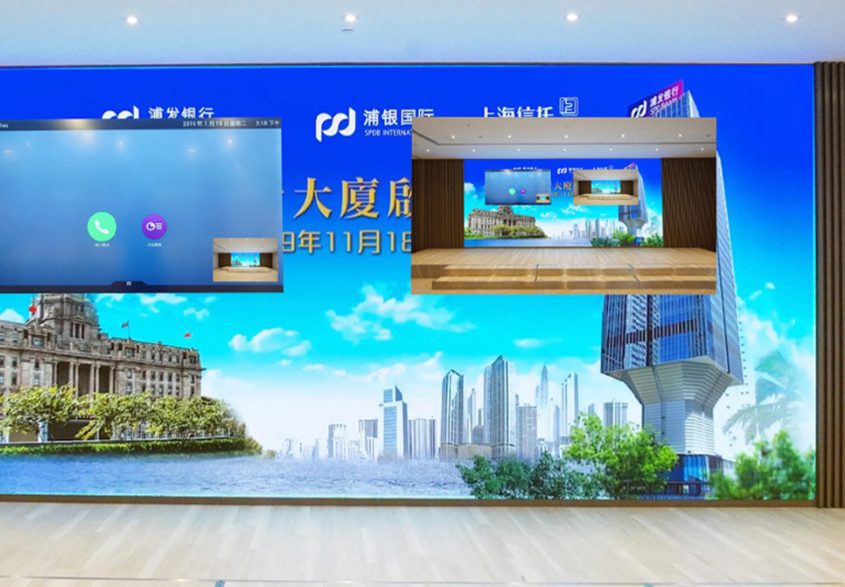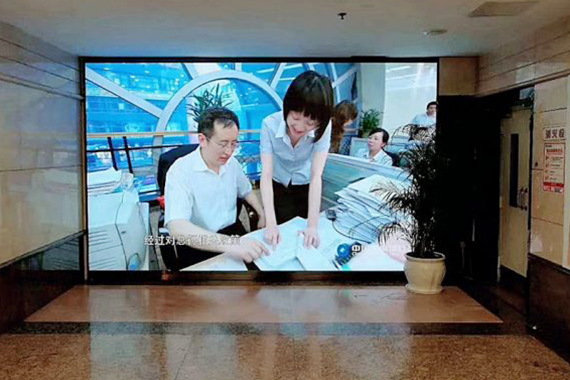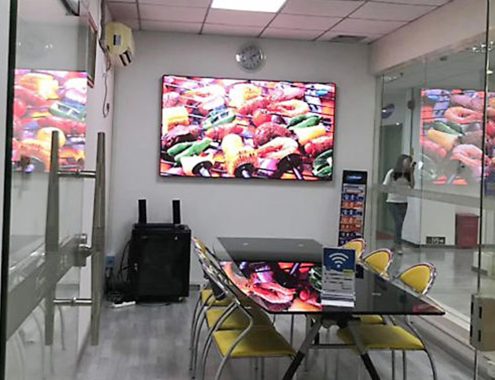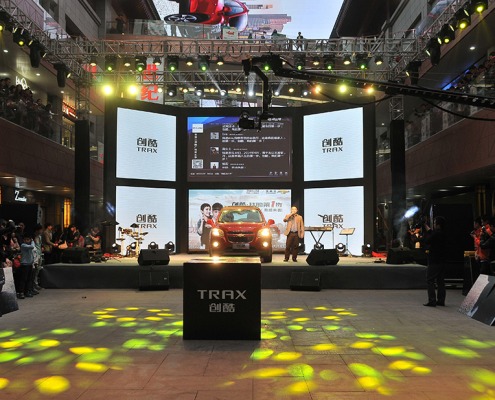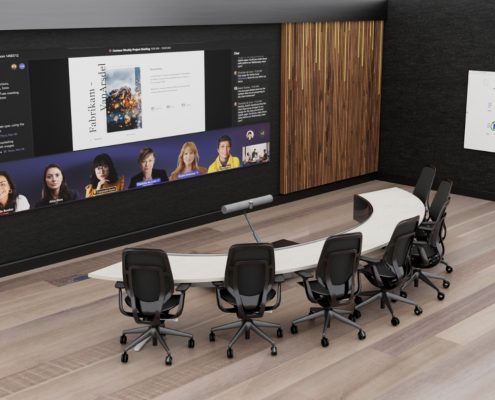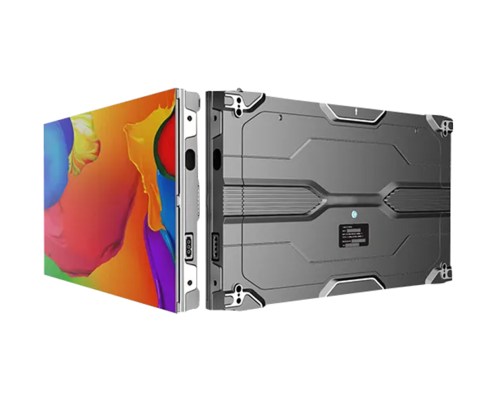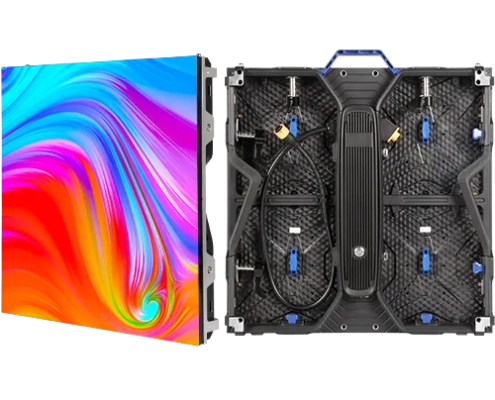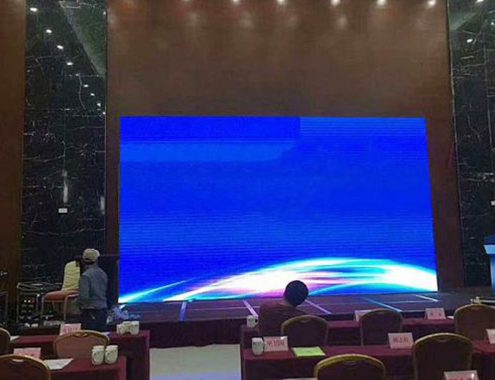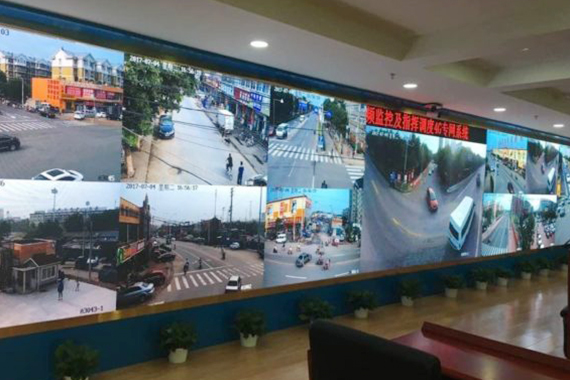Online Consultation or Need a Quote?
Elevating Indoor Environments: The Vibrant Clarity of Shine LED Display’s Indoor LED Screens
Indoor high brightness LED displays using SMD technology
Shine LED Display’s indoor LED screens are manufactured using the highest quality LED components, offering stunning brightness, contrast and colour reproduction. Available in a range of pixel pitches from 1.5mm to 10mm, our Indoor LED displays provide a level of brightness and vibrancy that standard LCD displays cannot compete with.
Taking color and contrast to exciting new depths
Premier indoor properties demand vivid image detail and wider viewing angles. Shine LED Display indoor LED Screen have a jet-black display face allowing for unparalleled brightness and contrast levels—making for sharper images, deeper colors and a brighter display picture. Our revolutionary lightweight module design makes for quick, convenient display installation.
Our Service
Serving Every Market
Whether it’s a high-resolution display for the front of a conference room orclassroom, a digital sign in a retail store, a poolside video wall for outdoormovies, or an on-camera background display for a virtual production Shine has LED displays to suit every application.
Range of Resolutions
Our variety of pixel pitches and modular LED cabinet design lets you createvideo walls to suit any content and physical space. While Full HD, 4Kresolution rectangular video walls are our most popular, our LED displayssupport video walls of countless resolutions and shapes.
Features
- The SMD (3-in-1) LED package provides wider viewing angles and extremely close viewing distances.
- Advanced video processing produces crystal-clear, detailed images with smooth motion reproductions.
- Image feeds delivered in both standard and high-definition formats.
- Full-depth image calibration in the factory and in the field provides for a uniform display picture.
- Integrates seamlessly with a variety of other Daktronics video products.
- Versatile pixel pitch selections from 1.2mm to 20mm, capable of ultra-high definition (UHD) resolutions and beyond.
EXPLORE MARKET SECTORS
- SHOPPING CENTRES
- BARS & CLUBS
- SPORTS FACILITIES
- TRANSPORT
- FASHION STORES
- TRADE SHOWS & EXHIBITIONS
- THEATRE & LIVE EVENTS
- THEME PARKS & ATTRACTIONS
Shine Indoor LED Screen
Shine 2 2.9mm Indoor LED Screen
Shine 2×2.9mm indoor LED Screen Panel-500x1000mm
Shine 3 3.9mm indoor LED Screen Panel
Shine 3x 3.9mm IndoorLED Screen Panel-500x1000mm
Shine 2.6×2.6mm FinePitch LED Video Panel
Shine 2E 2.9mm LEDVideo Screen Panel
Shine 3E 3.9mm LEDVideo Screen Panel
Shine 3E 3.9mm LEDVideo Panel
Online Consultation or Need a Quote?
The evolution of the indoor LED screen marks a significant milestone in the journey of modern visual technology. These screens, known for their vivid displays and versatile applications, have become an integral part of our daily visual experiences.
What Is Indoor LED Display?
An indoor LED display is a type of digital display system designed specifically for use inside buildings. It utilizes light-emitting diode (LED) technology to produce bright, vibrant images that can be seen clearly from various angles and distances. These displays are made up of small panels that fit together seamlessly, allowing them to create large screens suitable for a variety of applications.
The main characteristics of indoor LED displays include high resolution, excellent color accuracy, and significant brightness, although they are typically less bright than their outdoor counterparts to suit indoor lighting conditions. They are often used in settings like shopping malls, airports, corporate buildings, and event venues to display advertisements, information, live video feeds, and more.
Indoor LED displays have several advantages, such as their long lifespan, energy efficiency, and flexibility in size and shape. They can be customized to fit specific spaces and needs, making them a versatile choice for indoor digital signage and visual presentations.
What Is the Difference between Indoor and Outdoor LED Display?
The differences between indoor and outdoor LED displays stem from their design, which is tailored to their respective environments. Here are the key distinctions:
- Brightness and Visibility: Outdoor LED displays are designed to be much brighter than indoor LEDs because they need to be visible even in direct sunlight, which can greatly diminish the visibility of illuminated displays. The brightness of outdoor LEDs can be more than 5,000 nits (a measure of brightness), whereas indoor LEDs usually operate around 800 to 1,500 nits. This reduced brightness helps in minimizing eye strain for indoor environments which typically have controlled lighting conditions.
- Weather Resistance: Outdoor LED displays are built to withstand various environmental factors such as rain, wind, dust, and extreme temperatures. They are usually encased in robust, weatherproof cabinets that protect the internal components from moisture and debris. In contrast, indoor LED displays are not usually subjected to harsh weather conditions, so they lack such extensive protective measures and have a more streamlined and less rugged construction.
- Physical Durability: Linked to weather resistance, the physical durability of outdoor LEDs includes UV resistance to prevent the sun from fading the display over time. Outdoor units must also be robust enough to handle potential physical impacts that are less likely in controlled indoor environments.
- Pixel Pitch: Pixel pitch, which is the distance between the centers of two adjacent pixels, typically varies between indoor and outdoor LED displays due to viewing distance differences. Outdoor LED screens usually have a larger pixel pitch because they are meant to be viewed from a greater distance. Indoor screens, on the other hand, have a finer pixel pitch, allowing for detailed visuals that can be viewed up close without noticeable pixelation.
- Operational Cost and Complexity: Outdoor LED displays often require more power and cooling systems due to their higher brightness and larger size, potentially increasing operational costs. They might also need more complex infrastructure to support their weight and outdoor installation. Indoor displays, while also varied in size and shape, generally integrate more easily into interior spaces without the need for extensive structural support.
- Use Cases: The applications of indoor versus outdoor LED displays also differ significantly. Indoor LED displays are common in settings like shopping malls, exhibition halls, and conference centers, where they are used for advertising, information dissemination, and entertainment. Outdoor LED displays are prominent in places like sports stadiums, outdoor advertising billboards, and public transport displays, where they need to grab attention in a large-scale, open environment.
Overall, when choosing between an indoor and outdoor LED display, the decision should consider factors like the intended use, environment, viewer distance, and budget, each influencing the display’s specifications and capabilities.
The Evolution of Indoor LED Display Screens & Growing Importance in Modern Settings
The evolution of indoor LED display screens started with the shift from CRT and LCD technologies to LEDs, motivated by the need for brighter, more vibrant, energy-efficient, and compact displays.
Initially, LED technology was predominantly used in outdoor settings, known for its brightness and durability. However, as the technology advanced, it became increasingly suitable for indoor environments. This transition was marked by improvements in LED density and color accuracy, allowing for finer pixel pitches that could display detailed and sharp images even at close viewing distances.
Today, indoor LED screens are ubiquitous in various settings, ranging from corporate boardrooms and retail spaces to entertainment venues and public transport hubs. The versatility of the indoor LED display screen lies in its ability to adapt to different environments and purposes. Whether it’s for advertising, information display, or enhancing the ambiance of a space, these screens have proven to be incredibly effective.
- Enhanced Visual Experience: Indoor LED screens offer a level of image quality and brightness that is unmatched by traditional display technologies. This has made them the preferred choice for settings where image clarity and viewer engagement are paramount.
- Space Efficiency and Design Flexibility: Unlike bulky traditional displays, LED display screen indoor units are sleek and can be integrated seamlessly into various architectural designs. This flexibility has opened up new possibilities for interior design, allowing screens to become a part of the décor rather than just an add-on.
- Energy Efficiency and Sustainability: LED screens’ energy efficiency makes them a greener choice than older technologies, addressing increasing sustainability concerns.
Indoor LED Screen: A Blend of Brightness, Resolution, Quality, and Durability
The indoor LED screen has emerged as a pivotal element in modern display technology, distinguished by its exceptional brightness, high resolution, quality, and durability. These features not only set the indoor LED display screen apart from traditional display solutions but also enhance the overall visual experience in various indoor settings.
High Brightness and Resolution of Indoor LED Screen Displays
- Exceptional Brightness:Indoor LED screens are renowned for their high brightness levels, which significantly surpass those of standard LCD displays. This brightness is crucial in ensuring that the content displayed is vivid and visible even in well-lit indoor environments, such as shopping malls or airports.The ability to maintain consistent brightness over time is a key advantage of indoor LED screen displays. This ensures that the screens remain effective in catching and retaining viewer attention, making them ideal for advertising and information dissemination.
- High-Resolution Capabilities:The resolution of an indoor LED display screen is a critical factor in defining the clarity and detail of the images it projects. Modern indoor LED screens offer high resolutions, enabling them to display sharp, detailed images and videos that are essential for close-up viewing experiences. The importance of high resolution is particularly evident in settings where detail and image quality are paramount, such as in control rooms, broadcast studios, or luxury retail environments. Here, the fine pixel pitch of LED display screen indoor units allows for detailed and crisp visuals, essential for effective communication and display.
Quality and Durability of Indoor LED Screens
- Adherence to Strict Quality Standards:Shine LED Display adhere to stringent quality standards to ensure that each indoor LED screen display delivers optimal performance. Our quality commitment involves thorough testing for color, brightness, and uniformity, and using premium materials for the screens’ reliability and longevity. This focus on quality is often backed by comprehensive warranties, offering peace of mind to users.
- Durability and Maintenance:Durability is a cornerstone of indoor LED screen technology. These screens are designed to withstand the rigors of continuous use, making them a durable choice for various indoor applications. Regular maintenance and proper care play a crucial role in extending the lifespan of an indoor LED screen display. This includes routine cleaning, ensuring adequate ventilation, and timely servicing to address any technical issues. The ease of maintenance, often facilitated by modular designs, further adds to the practicality of using LED screens in indoor environments.
Indoor LED Screen: Choosing the Perfect Display for Your Space
Selecting the right indoor LED screen is a critical decision that can significantly impact the effectiveness of your visual display. Whether it’s for a corporate lobby, a retail space, or an entertainment venue, the right indoor LED display screen needs to meet specific criteria to ensure optimal performance in its intended environment.
Selecting Based on Pixel Pitch and Viewing Distance
- Importance of Pixel Pitch:Pixel pitch is a crucial factor in determining the resolution and clarity of an indoor LED screen display. It refers to the distance between the centers of two adjacent pixels, measured in millimeters. The choice of pixel pitch should be based on the viewing distance. A smaller pixel pitch is ideal for locations where viewers will be closer to the screen, as it offers higher resolution and finer detail. Conversely, for screens viewed from a greater distance, a larger pixel pitch may suffice.
- Viewing Angles and Audience Reach:The effectiveness of an LED display screen indoor also depends on its viewing angles. Wider viewing angles ensure that the content is visible and clear from different positions, enhancing audience reach. Understanding the typical viewing angles and distances in your intended setting will help you choose a screen that maximizes visibility and impact.
Quality and Durability Considerations
- Adherence to Quality Standards:When choosing an indoor LED screen display, it’s essential to consider the quality standards upheld by the manufacturer. This includes aspects like color consistency, brightness, and build quality. Opt for manufacturers who offer comprehensive warranties and have a reputation for quality as Shine LED Display. This ensures that your investment is protected and that the screen will deliver consistent performance over time.
- Durability and Maintenance:The durability of an indoor LED screen is key to its longevity. Look for screens built with high-quality materials that can withstand the rigors of indoor environments. Consider the maintenance requirements of the screen. Screens that are easy to service and maintain will ensure minimal downtime and longer life.
Customization and Flexibility
- Meeting Specific Design Needs:The ability to customize your indoor LED screen display is crucial, especially in settings where the screen needs to complement the interior design or fit specific spatial constraints. Shine LED Display offer a range of customization options, from size and shape to pixel density, allowing you to tailor the screen to your specific requirements.
- Exploring Customizable Options:There are various customizable features offered by Shine LED Display. This can include modular designs that allow for unique screen configurations, as well as special features like transparent screens or interactive capabilities. Customization not only ensures that the screen fits your space perfectly but also that it meets your functional requirements, whether for advertising, information display, or enhancing the ambiance of a space.
Environment-friendly
The lighter weight will consume less fuel when transporting, and no mercury is needed during production, but LCD displays need.
Moreover, indoor LED display board requires less energy and has a longer lifespan, which will also reduce waste.
Applications of Indoor LED Screens
The indoor LED screen has become a transformative element in various indoor settings, offering unparalleled advantages in terms of visual communication and ambiance enhancement. From corporate spaces to retail environments, the versatility of the indoor LED display screen is evident.
In each of these applications, the indoor LED screen display plays a crucial role in enhancing the visual experience, providing clear and engaging content tailored to the specific needs of the industry and setting.
Indoor LED Screen: Envisioning the Future of Digital Display
The future of indoor LED screen technology is poised at the cusp of significant advancements, shaping the way we interact with digital displays in various indoor environments. As we look ahead, the role of the indoor LED display screen in digital communication, advertising, and interior design is expected to evolve dramatically, driven by technological innovation and changing consumer needs.
Predictions and Trends in Indoor LED Screen Technology
- Advancements in Resolution and Image Quality: Future indoor LED screens are expected to offer even higher resolutions, pushing beyond the current standards to deliver ultra-high-definition (UHD) visuals. This will result in sharper, more detailed images, enhancing the viewer experience in settings like retail showrooms and corporate boardrooms. Innovations in color technology and image processing will likely lead to more vibrant and accurate color reproduction, making the indoor LED screen display even more appealing for high-end advertising and creative applications.
- Integration with Emerging Technologies: The integration of indoor LED display screens with emerging technologies such as augmented reality (AR) and virtual reality (VR) is anticipated. This could transform the indoor LED screen into an interactive platform, offering immersive experiences in retail, education, and entertainment sectors. The use of AI and machine learning in LED screen indoor displays will enable more personalized and responsive content, adapting to viewer preferences and behaviors in real-time.
- Sustainability and Energy Efficiency: As environmental concerns continue to grow, the future development of indoor LED screen displays will likely focus on sustainability. This includes using eco-friendly materials and designing screens that are more energy-efficient, reducing the carbon footprint of digital displays. LED display screen indoor units may also incorporate features like ambient light sensors to adjust brightness automatically, further conserving energy.
The Evolving Role of Indoor LED Screens
- Digital Communication and Advertising: Indoor LED screens will continue to revolutionize the advertising industry, offering brands innovative ways to engage with consumers. The ability to display dynamic, high-impact content will make LED screen indoor displays a key tool in omnichannel marketing strategies. In digital communication, indoor LED screens will play a vital role in conveying information effectively, whether in corporate settings, public spaces, or educational institutions.
- Interior Design and Architectural Integration: The aesthetic potential of indoor LED screen displays will be more fully realized in the realm of interior design. Screens will become an integral part of architectural spaces, blending seamlessly with the environment and enhancing the overall design aesthetic. Customizable and flexible LED display screen indoor units will allow for innovative uses in interior spaces, such as dynamic wall art, interactive floors, and integrated furniture designs.
FAQs About Indoor LED Screen
What is the lifespan of an LED wall?
The lifespan of an LED wall typically ranges from 80,000 to 100,000 hours, depending on usage and maintenance.
What is the difference between indoor and outdoor LED displays?
Indoor LED displays are designed for indoor use with higher resolution and lower brightness, while outdoor LED displays are built to withstand weather elements and are much brighter to be visible in sunlight.
Do LED screens get hot?
LED screens generate heat, but they are designed to dissipate it efficiently. They usually don’t get as hot as older screen technologies.
What is the life expectancy of an LED screen?
The life expectancy of an LED screen is around 10 to 12 years, with proper maintenance and usage.
How to choose the right pixel pitch for indoor LED screens?
Viewing Distance: The pixel pitch is the center-to-center distance between each LED pixel, measured in millimeters. A smaller pixel pitch corresponds to a higher pixel density and a clearer image when viewed up close. For indoor applications where viewers will be relatively close to the screen, such as in conference rooms or retail stores, a smaller pixel pitch (ranging from 2.5 mm to 4.0 mm) is typically advantageous[1].
Resolution Requirements: A higher resolution is beneficial for displaying detailed graphics or text. As pixel pitch decreases, the resolution increases for a given display size, improving the clarity and sharpness of the image. The specific content you intend to display will help determine the necessary resolution and hence the appropriate pixel pitch[2].
Budget: The cost of LED displays generally increases as the pixel pitch decreases (i.e., as the resolution increases). Hence, while a smaller pixel pitch provides a more detailed image, it will also require a higher investment. Finding a balance between image quality and budget constraints is essential[1].
Screen Size and Aspect Ratio: Depending on the dimensions and aspect ratio of the screen, certain pixel pitches may align better with standard content formats. Matching the pixel pitch to the screen size can help in achieving the native resolution that content is typically produced in, avoiding scaling issues[3].
Content Type: The type of content displayed (static images, videos, text, etc.) influences the desirable pixel pitch. For video walls where high-definition videos will be a considerable part of the content, a finer pixel pitch is preferable[4].
Environmental Lighting: The ambient lighting of the installation space can affect display visibility. In areas with high ambient light, a tighter pixel pitch can result in better visibility of the content as it generally allows for a brighter display[1].
Optimal Viewing Distance: The recommended optimal viewing distance for an LED screen is approximately 2 to 3 times the pixel pitch in meters. So, for instance, a P2 LED screen (with a 2mm pixel pitch) provides an optimal viewing experience from approximately 4 meters away[4].
The right pixel pitch for an indoor LED screen depends on the balance of these factors: the viewer’s distance from the screen, the desired image resolution, budget constraints, screen size and shape, content type, environmental lighting conditions, and optimal viewing distance. It’s important to weigh these factors according to the specific requirements of your space and intended use.
CONTACT US
Consult with Our Free Advisor for Your Next Project!



